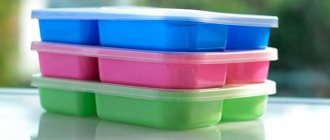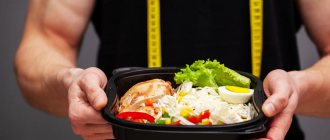May 25, 2021
Georgia has opened its land borders, but Russia will not let you out
Read May 24, 2021
How will a forced landing of a plane in Belarus affect travel?
Read May 20, 2021
Iceland is open: difficult to enter, even more difficult to get there
Read May 18, 2021
How can a foreigner get to Russia right now?
Read May 18, 2021
Personal experience of flying to Belgrade during a pandemic
Read May 17, 2021
Countries you can go to sea right now
Read
This time we won’t start at length: we’re hungry, so let’s get straight to the point. We have: the last 500 rubles on the card and a week until salary. How to survive and what to eat during this time?
So, the main thing is to pay attention to the nutritional value and benefits of foods. And nutrition does not equal calories. That is, there are a lot of calories in a chocolate bar, but it’s unlikely that you’ll be able to get enough of it, and your stomach will also hurt. So make choices in favor of those products that your mother would buy for you.
Approximate basket for 500 rubles
Groats. Buckwheat or millet will be healthier than polished rice.
Vegetables and fruits. If possible, take at least one cucumber, tomato, a couple of apples, and a bunch of parsley. Among the most budget-friendly options that we often pass by are turnips, cabbage, carrots, and beets. This is useful and will help you endure daily porridge easier. There is almost no need to cook vegetables: boil them and eat them. Stew or crunch the cabbage raw, sprinkle with salt.
Eggs. These guys will definitely save your budget week. You can fry it, boil it, make eggs Benedict or poach it, eat it with toast for breakfast, and even crumble it into a salad.
Pasta, bread. Second, it might be better to replace it with bread - they don’t go stale. We alternate pasta with cereal for variety. Remember how they were fried with eggs? Hello sweet past!
Something from canned food , like green peas, beans, saury or stew - they won’t let you get completely bored. By the way, we take into account that products such as butter, salt, flour, most likely, are already in the house.
A little weakness. Spend some money on cookies, candy bar, cheese, yogurt, juice. All the same, during the week you will want something tasty (in the usual sense of the word).
What else will help you put together the perfect basket for 500 rubles?
Planning is a must
When it comes to food savings, planning is the most important thing. First you need to evaluate how much you are spending now. Where are the “weak” points? What expensive products do you buy and do you really need them? Be sure to highlight what you can refuse. Perhaps you're into crackers and chips, crazy about soda, or consuming tons of ice cream. This is not only a serious hole in the budget, but also a blow to health.
How to go grocery shopping without buying too much: 10 simple tips>>>
You also need to highlight those expenses that you do not intend to give up: for example, your favorite type of coffee or dairy products from a good manufacturer.
Article on the topic
Saving with imagination. 9 tips to stop throwing away food
Now think, perhaps some products can be replaced with cheaper ones? For example, expensive yoghurts produced by a highly advertised factory? Or very expensive juices from a famous brand. In general, be careful with brands: often the products of a well-promoted company, which are on store shelves in the best places, are much more expensive than even higher-quality products from less well-known brands. Therefore, saving is also a reason to study the market well.
Finally, it is advisable to create a menu for the week and make a grocery list for it. You roughly calculate the amount you need, take it with you and go to the store. Just one piece of advice: take a little more with you than necessary so that you have some wiggle room and don’t feel like you’re being shortchanged on something in the store. And no matter how you look at it, you also need to please yourself.
Make a list and follow it
Caramels, nuts, glazed cheese curds, strange pudding... It seems that enemy fighters got into the basket - products that are far from essential.
You need to keep track of where your hand is reaching. The fact is that at other times we not only sometimes don’t look at the price, but also take products that we won’t even eat in the next week. That is, we buy for future use or for the arrival of guests on a certain date. Or we grab some tasty treats to crunch on while watching the TV series. But now this is completely short-sighted. Firstly, no guests will arrive until at least May. Secondly, our task is to stock up on food for the week and survive. And thirdly, you can crunch on something more affordable than Pringles.
There is a proven way - make a list before going to the store and strictly follow it. Before we put something in the cart, we ask ourselves: will I be satisfied with this for a long time and will it benefit me? If the answer is “yes,” we take the product. Just don’t be cunning when you answer: you can, of course, eat up waffles, but not for more than an hour. Then you will want to eat and drink even more.
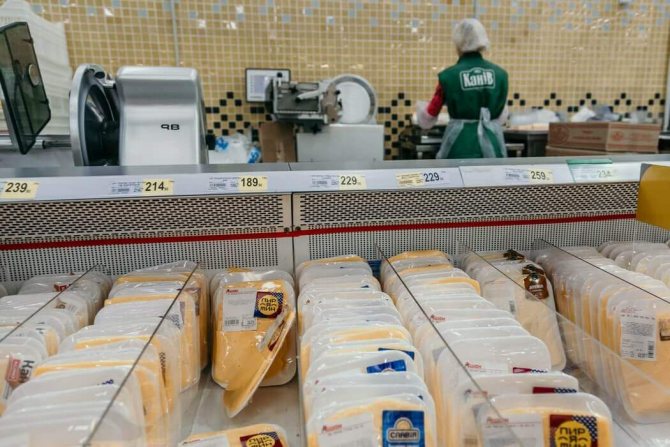
What products do we overpay for?
Very often there are tips for thrifty housewives to do everything at home themselves. Buy a yogurt maker, make dumplings in huge quantities, and so on... Yes, these tips have a basis, indeed, homemade dumplings are of better quality and cheaper than store-bought ones, and they are much tastier. It’s just that it will take half a day off to put a lot of them on.
Article on the topic
Hastily. Learning to choose semi-finished products
Nevertheless, it is worth reconsidering your attitude towards semi-finished products. So, for example, store-bought cutlets at cost are much more expensive than homemade ones, sausages and sausages cost a lot of money, ordinary goulash can be bought much cheaper than a kilo of sausages, but goulash is meat, and not an incomprehensible fatty something. And so on.
Go visit
Well, sorry, sometimes you can cheat. Or explain the circumstances to your friends: no money, I miss you, let's see you. Of course, this option will only work after the pandemic is over, when the isolation ends. But money difficulties may arise in the future, so keep your wits about you (or whatever you have).
And if you tell everything honestly and ask for lunch, you are unlikely to be refused. It will be even easier this way, otherwise you will have to lie and justify why you came empty-handed. And this way you can complain a little about life and eat with a clear conscience. Perhaps have a glass of wine.

Preference: seasonal
We still won’t stop buying vegetables and fruits. Of course, it's winter now, so fresh food is quite expensive. Nevertheless, you can choose something useful and cheap. For example, oranges. With them you can spend 40-45 rubles, tangerines, however, are already running out and becoming more expensive, but pears are still quite affordable, about 50 rubles. Don't forget about domestic apples. If we talk about vegetables, we will give preference to white cabbage, carrots and beets. You can also add celery root, a little pumpkin and fresh salads from the greenhouses closest to the city. In general, we choose those products that were not brought to us for a long time, but were grown and preserved in Russia or brought from our south.
Add all prices
When we are not limited in money, we don’t really think about what it costs. We roughly understand that a package of tea will cost 70–100 rubles, a piece of cheese will cost 200 rubles, your favorite yogurt will cost no more than 40 rubles, and so on. That is, we look at the cost, understand that it is within the acceptable range, and take the right product. Plus or minus 10–20–30 rubles does not matter.
But it’s another matter when we have a certain amount on hand, beyond which we cannot go beyond. Here, remember what we did in childhood, when everyone took out a few coins and put them in a common pile. The bunch was counted and they went for a common purchase for everyone - ice cream, chewing gum or a bag of crackers. In those moments, every penny mattered. A price difference of one ruble could be a decisive factor in the purchase. Therefore, when you have exactly 500 rubles, carefully study each price and enter it into the calculator. To avoid canceling at the checkout, calculate everything in advance and understand whether you managed to stay within the budget.

We pay attention to new products
Article on the topic
How to extend the life of fried meat and bread. 12 tips
For example, pearl barley - does it often appear on your table? What about millet? What do you make from it, besides milk porridge once every six months? Meanwhile, cereals are an excellent and inexpensive basis for the winter diet. 15-20 rubles per kilogram, and a kilogram is enough for 5-6 lunches for a family of three people.
Take a closer look at new varieties of fish, especially domestic ones. For example, foreign salmon can be successfully replaced by domestic coho salmon, and expensive beef by cheaper turkey fillet or other poultry.
Choose simple stores
Perhaps you will have to skip vegan showrooms and fashionable gastronomic shops for now. Our stop is large mass chain stores with affordable prices, like Billa, Dixie, and Magnit. There are such supermarkets and similar ones in many Russian cities.
Their special advantage is not so much in prices, but in constant discounts and promotions on products. Good pasta made from durum wheat, and even in stylish packaging, can be found for 29 rubles, for example. And on special “discount” shelves there is always something sweet for tea at very low prices - from 15 rubles for a chocolate-nut bar to 40 rubles for a large package of oatmeal cookies. You still want something sweet, so add some tasty treats to your basket.
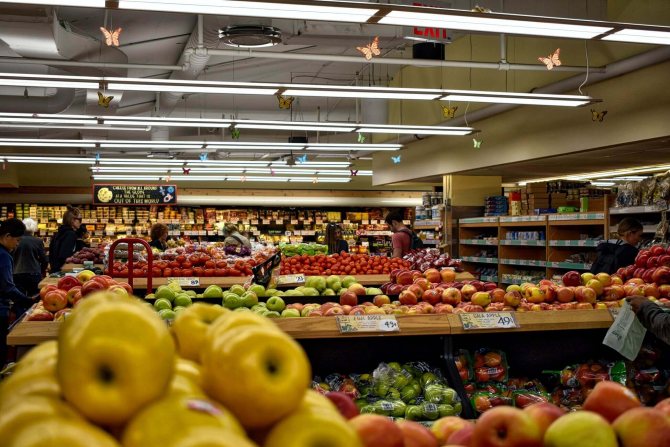
Some ideas for saving
- Buy whole chicken, not parts. Then you will cook soup from the wings and back, and the rest will go into pilaf or chicken stroganoff.
- To save on meat dishes, do not cook them separately, but make casseroles and pilafs. That is, combine meat with side dishes in one dish.
- Don't make portioned meals. That is, fried chops for each family member (and often with an addition) can be replaced with beef stroganoff or lazy cabbage roll. There will be less meat left, and everyone will have enough to eat.
- Replace meat with offal. For example, beef heart is much cheaper than regular meat, and costs two or even three times less. And the heart can make a good goulash, minced meat filling for casseroles, etc.
- For the holiday table, you can replace store-bought smoked sausages and hams with homemade boiled pork. It is much cheaper and tastier.
- Subjective advice: try Jewish cuisine. For centuries, its creators were forced to save money and come up with cheap but very tasty dishes.
You can come up with similar tips yourself - a thousand, once you start, saving turns into an exciting activity, dishes come up by themselves.
Cook at home
It is not only lazy to cook, but even to eat what has been cooked. As a rule, we no longer think about what to have for lunch: we always have a phone with a food delivery app at hand - order either rolls, pizza, or a full three-course set and coffee. But now let's remember what the stove looks like.
Tired already? No problem, let's break through! Start by coming up with a menu for each day. Okay, at least approximate. The format “Monday lunch buckwheat with carrots” and “Tuesday bread and butter and tea” is suitable. When you plan out your whole week, you will clearly see what products you need and in what quantities. It will also become clear what can be corrected in the menu, replacing one dish with another based on the budget. Check if there are days in which products are repeated. For example, on Monday and Thursday you wrote buckwheat. Then you should move the buckwheat from Thursday to Tuesday in order to cook it on Monday once for both days in a row. Optimization!
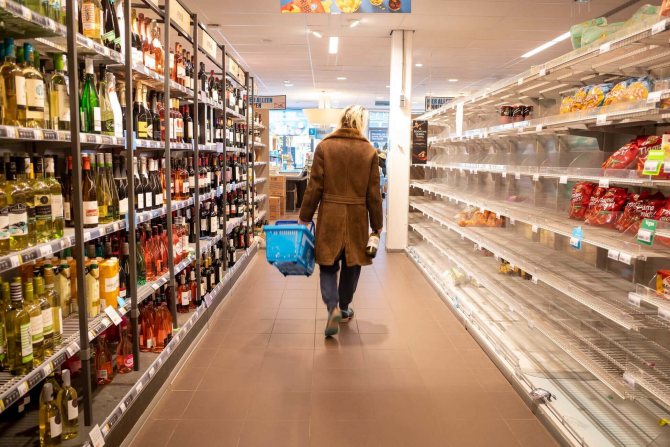
“Buy” groceries at home
Before making a long list, it's best to check what you already have at home and what's left over from previous weeks. What's frozen? What has “crept” closer to the wall of the refrigerator? What's hidden on the kitchen shelves? If it's still edible, build your weekly menu around those items. This will prevent these items from ending up in landfills in the future, and will also significantly reduce your weekly budget since so much has already been purchased before.
If you don’t want to eat some product now, and it will sit quietly for another week, it is better to mark on the container when you bought it (approximately) and when you checked that it was fresh. This way you will avoid doubts about when and what else you can consume.
Economical menu for the week
Below is a menu for the week indicating the serving size and its calorie content per person.
| Day of the week | Eating | Dish | Portion volume | Calorie content |
| Monday | Breakfast | Milk rice porridge | 150 gr | 225 |
| Lunch | Glass of tea | 200 ml | 60 | |
| 3 sandwiches (bread, butter, cheese) | 150 gr | 300 | ||
| Dinner | Sauerkraut borscht | 300 gr | 250 | |
| Afternoon snack | Cottage cheese with sugar and sour cream | 200 gr | 200 | |
| Dinner | Vegetable stew | 200 gr | 300 | |
| Pork sauce | 100 gr | 355 | ||
| Second dinner (2-3 hours before bedtime) | A glass of kefir | 250 gr | 75 |
| Tuesday | Breakfast | Oatmeal | 150 gr | 205 |
| Lunch | A glass of kefir | 250 ml | 75 | |
| Cookies “warm milk” 4 pcs | 80 gr | 95 | ||
| Dinner | Sauerkraut borscht | 250 gr | 390 | |
| Afternoon snack | Baked apple | 180 gr | 80 | |
| Dinner | Rice | 150 gr | 226 | |
| Vegetable salad | 200 gr | 300 | ||
| Second dinner (2-3 hours before bedtime) | Vegetable salad (cucumber, tomato, pepper) | 130 gr | 195 |
| Wednesday | Breakfast | Milk buckwheat porridge | 150 gr | 300 |
| Lunch | Glass of tea | 200 ml | 60 | |
| 3 sandwiches (bread, butter, cheese) | 150 gr | 300 | ||
| Dinner | Cabbage soup with fresh cabbage | 300 gr | 250 | |
| Afternoon snack | Banana | 200 gr | 200 | |
| Dinner | Mashed potatoes | 150 gr | 195 | |
| Cutlet | 100 gr | 200 | ||
| Second dinner (2-3 hours before bedtime) | Glass of fermented baked milk | 200 gr | 160 |
| Thursday | Breakfast | Milk soup with rice | 250 gr | 400 |
| Lunch | Glass of fermented baked milk | 250 ml | 160 | |
| Cookies 4 pcs | 80 gr | 95 | ||
| Dinner | Cabbage soup with fresh cabbage | 250 gr | 220 | |
| Afternoon snack | Pear | 130 gr | 50 | |
| Dinner | Pasta with cheese | 150 gr | 300 | |
| 2 pickled cucumbers | 200 gr | 60 | ||
| Second dinner (2-3 hours before bedtime) | 2 fresh carrots | 100 g5 | 80 |
| Friday | Breakfast | Fried eggs | 130 gr | 260 |
| Lunch | Millet porridge | 150 ml | 250 | |
| Cookies 4 pcs | 80 gr | 95 | ||
| Dinner | Chicken noodle soup | 250 gr | 617 | |
| Afternoon snack | Cranberry juice and apple jam bun | 250 gr; 100 gr | 150; 200 | |
| Dinner | Buckwheat | 150 gr | 255 | |
| Beef liver goulash | 80 gr | 160 | ||
| Second dinner (2-3 hours before bedtime) | Beetroot salad with prunes | 200 gr | 140 |
| Saturday | Breakfast | Cottage cheese casserole | 150 gr | 200 |
| Lunch | Glass of tea | 200 ml | 60 | |
| 3 sprat sandwiches | 100 gr | 300 | ||
| Dinner | Chicken noodle soup | 250 gr | 617 | |
| Afternoon snack | Fruit salad (apple, pear, tangerine, yogurt) | 200 gr | 300 | |
| Dinner | French potato | 250 gr | 650 | |
| 80 gr | 160 | |||
| Second dinner (2-3 hours before bedtime) | A glass of kefir | 250 gr | 75 |
| Sunday | Breakfast | Fried egg with tomatoes | 150 gr | 280 |
| Lunch | Semolina | 150 ml | 300 | |
| 100 gr | 300 | |||
| Dinner | Rassolnik | 250 gr | 615 | |
| Afternoon snack | Milkshake with berries | 250 gr | 200 | |
| Dinner | Pilaf | 150 gr | 4000 | |
| Second dinner (2-3 hours before bedtime) | Apple | 180 gr | 80 |



